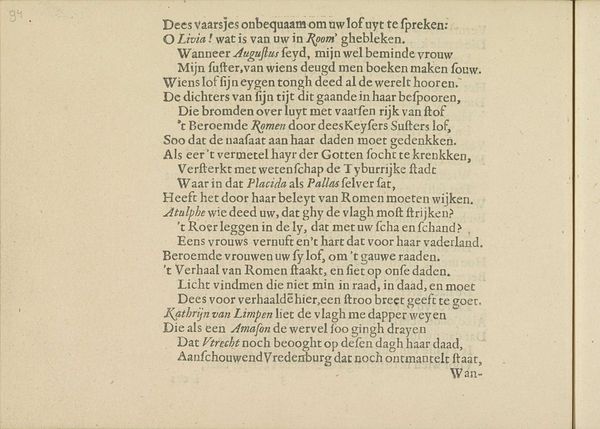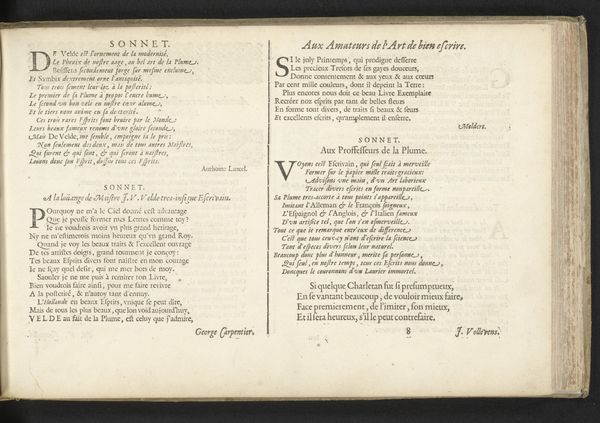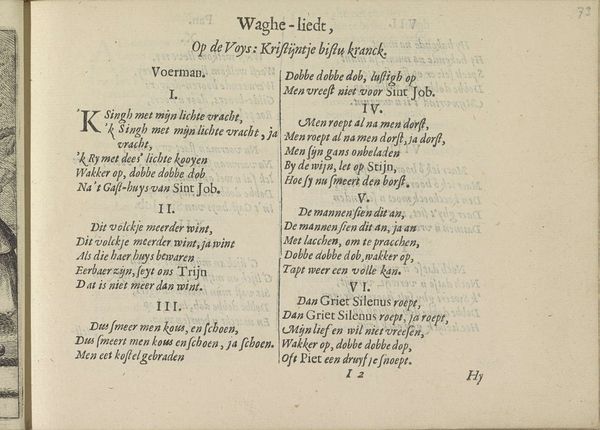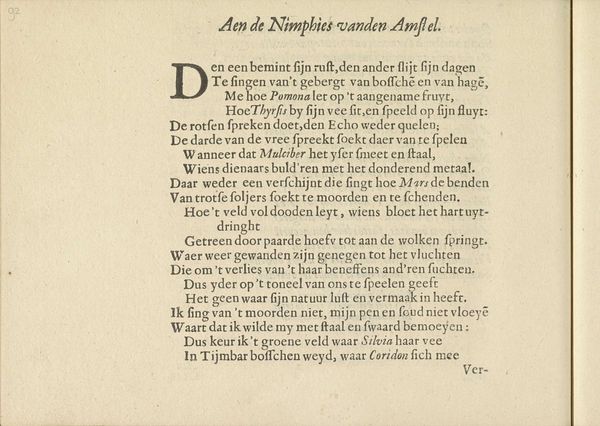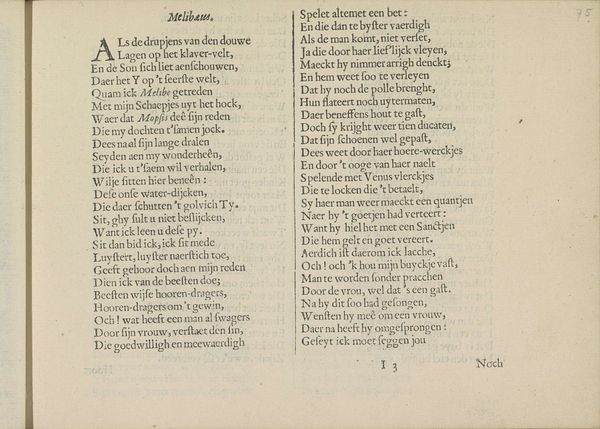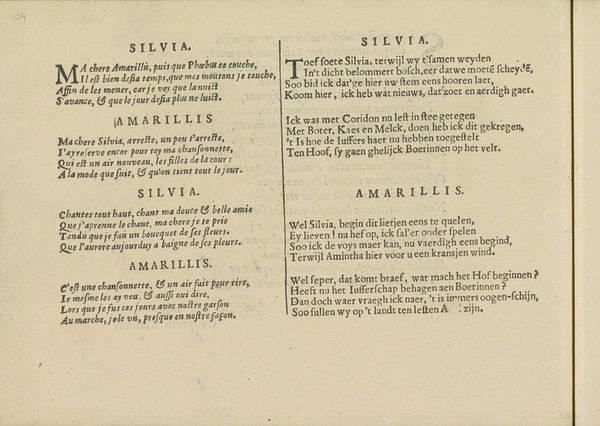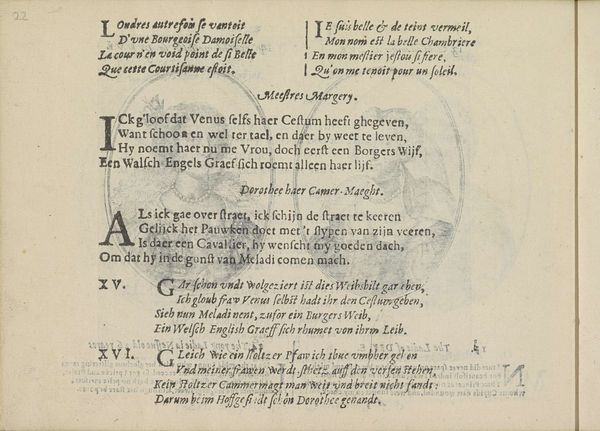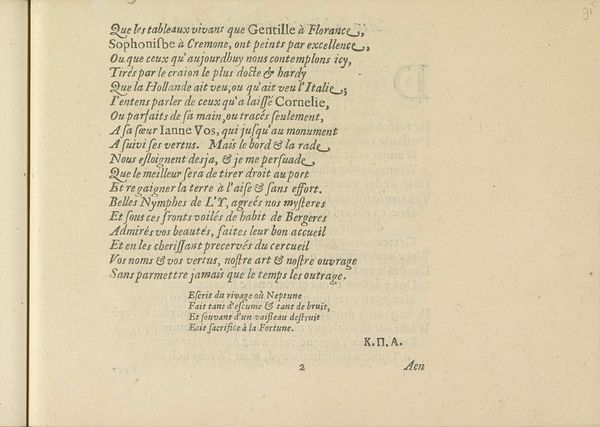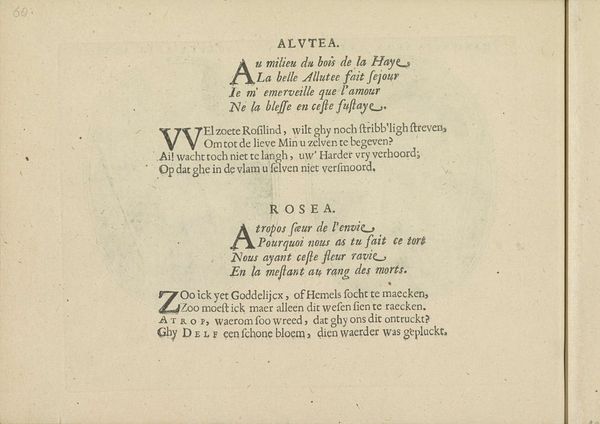
print, textile, typography, engraving
#
dutch-golden-age
# print
#
textile
#
typography
#
engraving
Dimensions: height 140 mm, width 190 mm
Copyright: Rijks Museum: Open Domain
Curator: Here we have a page, number 2, from *Wagenlied*, or "Wagon Songs", printed in 1641. The artist is Crispijn van de Passe the Younger. It looks to be a print, specifically an engraving, from a book using textile and typography as material. Editor: It feels…very academic, I guess. A bit dense, because I don't read the language. What's your perspective on this? Curator: For me, the fascination lies in the printing process itself. Engraving these texts—these folk songs and satirical poems—involved significant labor and skill. The circulation of such printed material speaks to a developing culture of both literacy and consumption. It wasn’t just about reading, it was about owning a physical manifestation of culture, something reproduced en masse. What about you, what process do you observe? Editor: Well, I suppose thinking about it as something manufactured makes sense. It's easy to forget when it is preserved like this, like fine art. Curator: Exactly! The labor invested in creating each copy is substantial. This wasn't some effortless digital file; each page required careful work. It really breaks down this divide between "high" art and "craft," because skilled artisans were crucial to producing and spreading this "art." Now look at the use of textile to describe the material: what thoughts does that arise in you? Editor: I guess textile speaks to its use as clothing, everyday material made for practical functions. Applying textile as description might be downplaying any notions of hierarchy associated with visual media. Curator: Precisely! It suggests a blurring of boundaries between everyday material and artistic creation, doesn’t it? Do you agree that emphasizing materiality transforms our understanding? Editor: Definitely! It's helped me consider the piece as a product of labor, reaching a wider audience through printed form. I’ll think more about art's material origins.
Comments
No comments
Be the first to comment and join the conversation on the ultimate creative platform.


